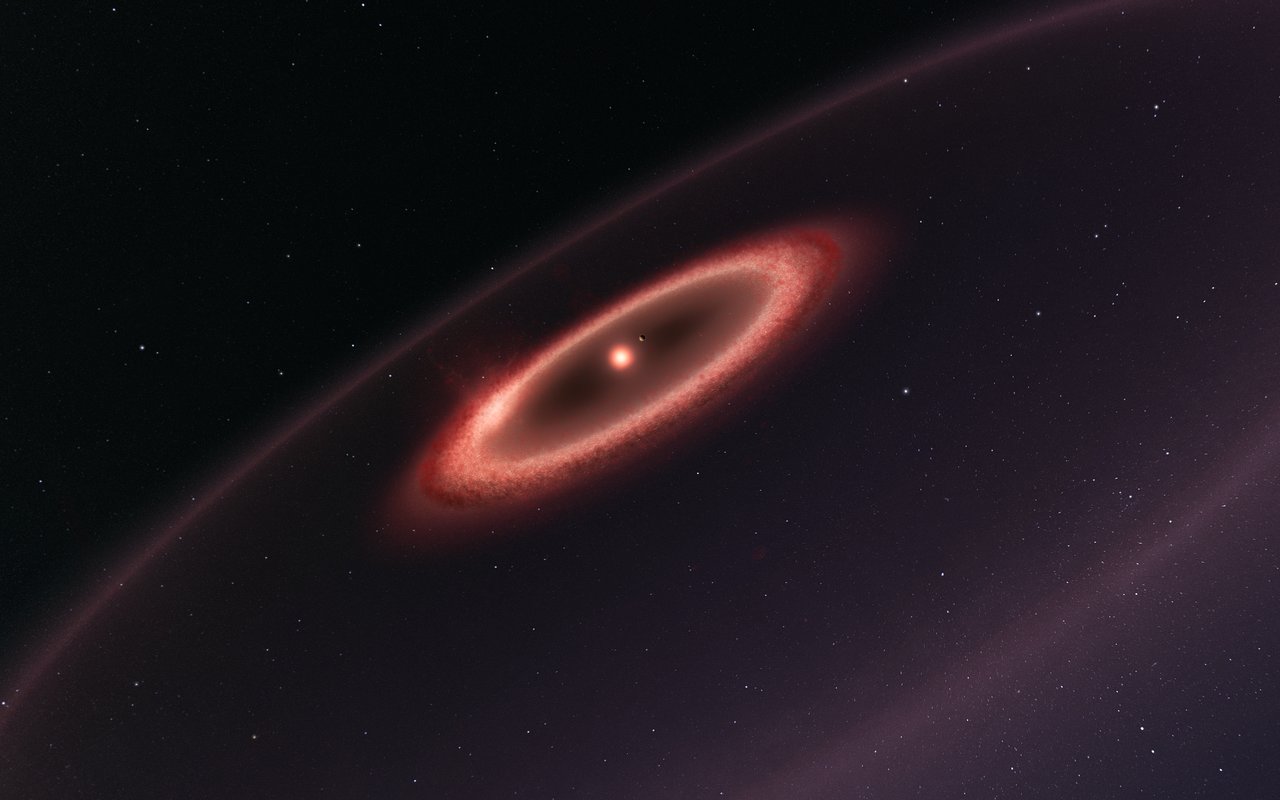Indications of the existence of a second planet around Proxima Centauri, the closest star to the Sun
With a minimum mass of about six times that of the Earth, the planet would revolve around the star at 1.5 times the distance between the Earth and the Sun. This study adds to previous work that points to the existence of a complex planetary system around Proxima Centauri
Proxima Centauri, the closest star to the Sun, is a red dwarf that is only four light years away. Eight times less massive than the Sun, it is proving to be an increasingly complex system: in 2016 a temperate planet the size of the Earth, which is the closest extrasolar planet, was found around Proxima, and in 2017 indications of the existence of dust belts around the star were detected, perhaps the remains of the formation of the system. Now, an international team with the participation of the Institute of Astrophysics of Andalusia (IAA-CSIC) announces the discovery of a possible second planet, Proxima c.
"At the IAA we are excited about this result because it provides new information for understanding the planetary system around Proxima Centauri", says Pedro J. Amado, a researcher at the IAA-CSIC who is participating in the finding. “We started co-leading the first observations for the Red Dots project, which resulted in the detection of the first planet, Proxima b. We continued trying to understand the star's environment, with the detection of possible dust belts and a point source of dust emission at 1.5 times the Earth-Sun distance from the star, which we attribute to the emission of rings around a second planet. And now we detect a second possible planet orbiting at exactly that distance. A coincidence? Maybe, but we need to confirm it”.

A ROCKY PLANET BEYOND THE SNOW LINE
The discovery, published today on the cover of Science Advances magazine, was made by an international team of researchers thanks to data collected from Chile with the UVES and HARPS spectrographs, belonging to the European Southern Observatory (ESO). The observations, which cover a total of seventeen years, revealed the presence of a signal with a period of 5.2 years compatible with the existence of a second planet around Proxima Centauri with a minimum mass of about six times that of the Earth.
"The signal seems very convincing, but we still cannot rule out that it is due to other factors, such as a cycle of stellar magnetic activity," explains Cristina Rodríguez-López, an IAA-CSIC researcher participating in the study. “This is an ideal planet for combining complementary techniques to confirm its existence, and if we can achieve this we will need to review the models: the signal suggests that it is a rocky planet, but it lies beyond what is known as the snow line, from which we find gas giant planets. A rocky planet in this region requires new approaches”.
The signal detected is at the limit of instrumental capabilities, and the researchers expect that the astrometric data taken with the Gaia satellite will play a decisive role in confirming the existence of Proxima c. In addition, the proximity of the system and the distance between the planet and the star suggest that it could become a major target for monitoring and characterization with next-generation direct-imaging instrumentation.
M. Damasso et al. “A low-mass planet candidate orbiting Proxima Centauri at a distance of 1.5 au". Science Advances, 15 enero 2020. DOI: 10.1126/sciadv.aax7467
Instituto de Astrofísica de Andalucía (IAA-CSIC)
Unidad de Divulgación y Comunicación
Silbia López de Lacalle - sll[arroba]iaa.es - 958230532
http://www.iaa.es
http://www-divulgacion.iaa.es

